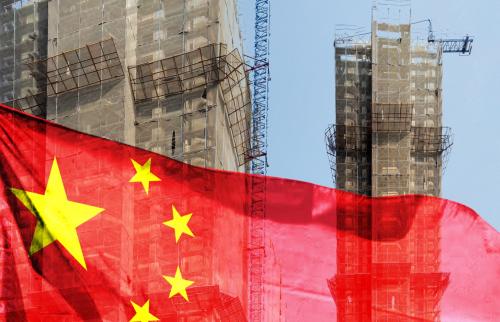President Obama’s recent trip to Cuba has highlighted both the ongoing tensions between Havana and Washington and the potential for an improved relationship. The tensions were most evident in the president’s contentious discussions with Cuban President Raul Castro about human rights and political openness. On the other hand, the landmark baseball game between the Tampa Bay Rays and the Cuban National Team was a particularly colorful example of the potential of closer ties. But far more consequential for the Cuban people would be a transformation of Cuba’s sputtering state-dominated economy — which the U.S. can help make a reality.
It is well understood that lifting the U.S. trade embargo would be a game-changer. But this depends on Congress, and, at least for now, appears unlikely. But another set of key (and underappreciated) reforms looks much more feasible: the United States could take practical and essential steps to help Cuba develop a fully functioning financial system. The future of its economy depends on it.
The Cuban revolution is well regarded for its accomplishments in raising levels of education and medical care. But the revolution has failed to deliver along other economic dimensions, and has depended on assistance from the Soviet Union and, later, Venezuela. The very difficult “special period” of the 1990s, after the fall of the Soviet Union led to a steep reduction of foreign aid, threatens to be repeated in this era as Venezuela’s economy collapses.
In response to this new reality, Cuba needs to grow its private sector, which now employs nearly 28 percent of the workforce. Given the state of government finances and the loss of Venezuelan sponsorship, the state needs to make further serious cuts in government payrolls. During the president’s trip we heard that the island’s privately-run small businesses, or cuentapropistas, are the most vibrant sector of the economy. Cuentapropistas are only allowed to operate within a narrow government-approved list of categories, including hair salons, restaurants, and tour guides. In an effort to expand the private sector, employ more people, and grow the economy, the Cuban government has been gradually expanding this list of permitted areas.
But small businesses need more than the legal permission to operate. As in any other country, building a business in Cuba will require access to capital. Today, many Cubans who start such endeavors get seed money in the form of remittances from relatives in the United States. But if overseas financing of this type remains the main source of capital for cuentapropistas, they will only contribute to the creation of a stratified class of have and have-nots — if you have family in South Florida, you’re set. If not, you’re out of luck.
The United States should take several steps to help catalyze the nascent Cuban private sector, helping the Cuban economy grow in a way that is more independent of the central government. The Treasury Department stated in January 2015 that a limited range of U.S. projects that support microfinancing (small loans for entrepreneurs) in Cuba will be allowed, although none have yet emerged. While there has been an easing of restrictions on banking, a range of U.S. banking services are still prohibited for Cubans. These prohibitions should also be eliminated, although, even if they are, the Cuban’s government’s willingness to allow the presence of U.S. banks in the country is uncertain.
President Obama should lift the remaining restrictions on banks operating in Cuba, and make clear to banks and microfinance organizations that such work in Cuba is viable and would be welcomed. Of course, this can only happen if the Cuban government allows foreign banks to service the Cuban people for both retail banking and to serve the nascent cuentapropistas.
But serious growth cannot occur through small business expansion alone. Foreign investment and the business of major foreign corporations will be essential for adding jobs and injecting capital into the Cuban economy. U.S. businesses remain largely barred from doing business with Cuba — and will remain severely restricted as long as the congress-mandated embargo remains in place — but other nations have long been able to trade and invest in the island. As U.S. restrictions have eased, such as with the May 2015 removal of Cuba from the list of countries that sponsor terrorism, it has become easier for foreign companies to work in Cuba. But there are still a host of transactions, particularly those denominated in dollars, engaging in which risks severe penalties from the U.S. Treasury. President Obama should use his presidential discretion to ease such policies.
Of course, much of the necessary changes must come from actions of the Cuban government, not from the United States. Foreign capital will not come to Cuba until the country addresses its lack of a sound financial infrastructure, transparent accounting, and legal assurances. Currently, Cuba has too few banks to serve its population.
But a big problem facing Cuba is that, while it has too few banks, it has too many currencies: two, to be precise. While most Cubans are paid in Cuban pesos (CUP) and can buy basic goods in this currency, luxury goods are mostly priced in Cuban convertible pesos (CUC), a much more valuable currency which is pegged to the dollar and most easily obtainable from tourists. The two-currency arrangement leads to serious pricing distortions and economic inefficiencies, not least by segregating the economy into CUP and CUC sectors.
The Cuban government has said that it is committed to eliminating this confusing system, unifying the two currencies on a day declared dia cero (“day zero”). But this will be a challenging task, rife with implications for monetary stability, fiscal balances, and inequality. To accomplish it, Havana would do well to seek technical assistance from international financial institutions, starting with the Inter-American Development Bank (IDB). And the United States can help Cuba in this regard by facilitating its relationship with the IDB, as well as allowing it to become a member country of the IMF and the World Bank. President Obama should make it clear that the United States will not stand in the way of this technical assistance and of closer relationships between Cuba and international financial institutions.
While in Cuba, President Obama rightly took a clear stand in advocating for the expansion of political and civil liberties. Economic freedoms, and the opportunity to better one’s station in life, is likewise an important right, especially since Cuba’s standard of living is relatively low. The Cuban government needs to enable its people to realize their economic dreams and aspirations by allowing the private sector to expand and encouraging foreign firms to aid the country’s development. And it’s time for the United States to do what it can to make this possible.
Editor’s note: This piece originally appeared in Foreign Policy.
The Brookings Institution is committed to quality, independence, and impact.
We are supported by a diverse array of funders. In line with our values and policies, each Brookings publication represents the sole views of its author(s).



Commentary
Op-edHow to bring capital to Cuba
April 7, 2016